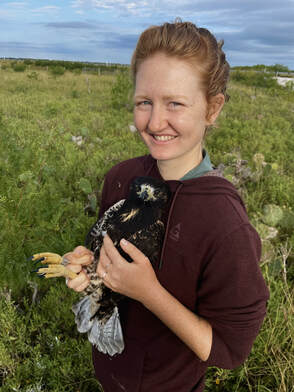Adam Ahlers - Associate Professor
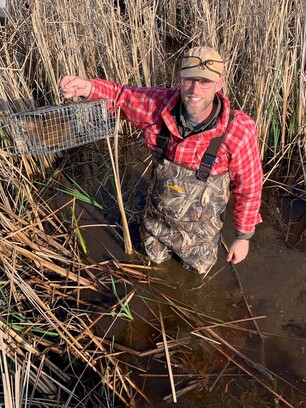
Adam Ahlers is an Associate Professor and applied ecologist in the Department of Horticulture and Natural Resources at Kansas State University (KSU) and an Affiliate Fellow of the Center for Great Plains Studies at the University of Nebraska- Lincoln (UNL). He received his Ph.D. in Natural Resources and Environmental Sciences from the University of Illinois (Urbana-Champaign) in 2015. His research is focused on understanding how wildlife populations are impacted by environmental change. To this end, Adam has conducted studies investigating how survival, space use, and population distributions of various wildlife species are affected by landscape change (e.g., invasive species, urbanization, agricultural production). He also teaches courses at KSU focusing on management of wildlife populations and their habitats. Adam is life member of the American Society of Mammalogists and Great Plains Natural Science Society and also active in The Wildlife Society. In his spare time, he loves exploring Earth with his wife and two daughters or hunting and fishing in wild places.
Lydia Robbins - M.S. Student
|
Lydia is identifying the distribution of southern flying squirrel (Glaucomys volans) populations in Kansas and trying to understand how landscape composition and configuration affect patch-use dynamics. She graduated from Barnard College-Columbia University in 2022 with a B.A in Biology along with a minor in Environmental Science. After graduating she worked as a research technician with Texas A&M University on multiple projects with taxa including small mammals, passerines, raptors and tortoises. She has an interest in mammalian ecology and how changing landscapes impact behavior and survival. Lydia is co-advised by Andrew Hope.
|
Brandon Bernhardt - M.S. Student
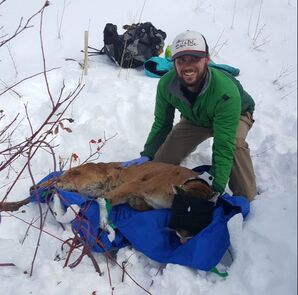
Brandon is assessing distribution and population connectivity of southern flying squirrels (Glaucomys volans) in eastern Kansas using camera trap surveys and occupancy modeling. He is also estimating annual survival by PIT tagging live-captured individuals and using mark-recapture models. Brandon graduated from University of Delaware with a B.A. in Biology. Since graduating, he has worked on a variety of wildlife research and management projects across the country and globe, focusing on many different mammalian species. Brandon is co-advised by Andrew Hope. He has an interest in applied research based in habitat use, movement ecology, and population dynamics. In his free time, he likes hiking and playing sports.
Domnique (Nic) Byrd - M.S. Student
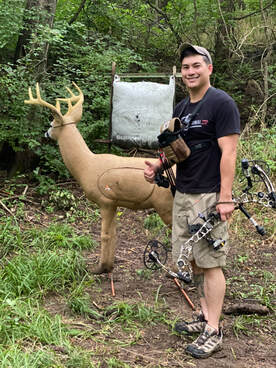
Nic is using camera traps and space-to-event models to estimate densities of elk (Cervus canadensis) and white-tailed deer (Odocoileus virginianus) populations on the Fort Riley Military Reservation (~40,000 ha) in Kansas, USA. He is also comparing results obtained from these methods to density estimates derived from distance sampling and ariel survey methods. Nic was an infantry squad leader from 2010-2016, and has worked several field technician and wildlife research gigs before starting graduate school. Nic received his B.S. degree in Fisheries, Wildlife, Conservation & Environmental Biology, along with a minor in Agronomy, from Kansas State University. In his spare time he enjoys archery hunting and waterfowl hunting in the Midwest.
Caleb Bomske - Ph.D. student
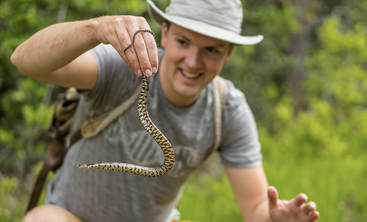
Caleb is interested in how population demographics of wetland species are affected by landscape composition and configuration. He is using occupancy surveys and mark-recapture techniques to understand how upland landscapes can influence habitat occupancy and abundance dynamics of muskrats (Ondatra zibethicus) in the Kansas Flint Hills ecosystem. He is also conducting experimental movement trials to better understand how landscape composition can influence dispersal decisions and movement paths of muskrats in upland areas. Caleb received his B.S. in Biology from Pensacola Christian College and M.S. in Biology from the University of Nebraska at Kearney. His thesis work focused on understanding how anuran species richness is influenced by local-scale wetland characteristics. Caleb's work from our lab is published in Mammal Review and Prairie Naturalist.
Leslie Armendariz - Undergraduate Researcher
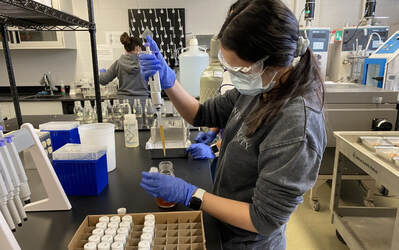
Leslie is involved in the Developing Scholars Program at Kansas State University and has a wide variety of interests when it comes to carnivores and how they are impacted by urbanization. She is conducting a camera-trap survey across green spaces in Manhattan, KS to better understand how red foxes (Vulpes vulpes) use these areas. Leslie is currently pursuing a B.S. degree in Animal Sciences and Industry with a Pre-Vet studies track at Kansas State University. She hopes to get into Kansas State University Veterinary School in two years and graduate with a DVM specializing in Equine Internal Medicine.
Kaitlin Lospinoso - Research Associate
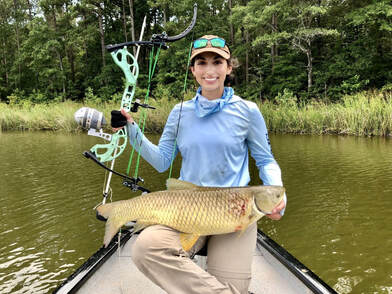
Kaitlin helps support our work on elk (Cervus canadensis) populations in the Flint Hills and also our southern flying squirrel (Glaucomys volans) research in eastern Kansas. Additionally, with the use of camera traps, Kaitlin is helping us identify the distribution of gray foxes (Urocyon cinereoargenteus) in eastern Kansas. Prior to coming to Kansas State University, Kaitlin worked various jobs involving furbearers and white-tailed deer. She is interested in applied wildlife research and holds a B.S. degree in Fisheries, Wildlife and Conservation Biology from North Carolina State University.
Amanda Bishop - Research Associate
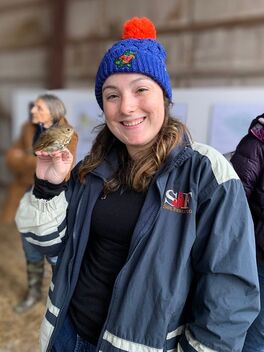
Amanda currently helps with our work on southern flying squirrel (Glaucomys volans) populations in eastern Kansas. Before working with Kansas State University, she worked in Florida with multiple taxa, including white-tailed deer (Odocoileus virginianus), cactus bugs (Chelinidea vittiger), and a range of passerines. In addition, she has experience working with camera traps and in necropsy labs. She has a B.S. degree from the University of Florida in Wildlife Ecology and Conservation and is interested in how climate change can impact mammal ranges and behavior.
Lab Alumni
Dr. Gabriela Palomo
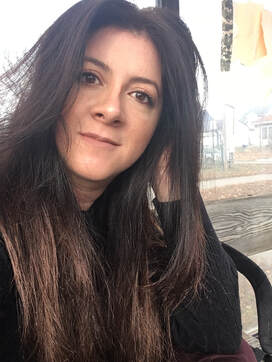
Gabby was a postdoctoral fellow at KSU and is now a postdoctoral researcher at the University of Maryland. She estimated the effects of local and landscape-scale drivers of mammal distributions as well as predator-prey co-occurrence and behavioral interactions while in our lab. She is a carnivore ecologist interested in how anthropogenic activities affect wildlife populations. Her doctoral research focused on understanding the impacts of human disturbances on carnivore populations in the Maya Biosphere Reserve in Guatemala, where she used camera-trap data to estimate variation in ocelot (Leopardis pardalis) density and space use using spatial-capture recapture models, changes in co-occurrence patterns between jaguars (Panthera onca), pumas (Puma concolor), ocelots, and gray foxes (Urocyon cinereoargenteus), as well as changes in spatio-temporal patterns in carnivores across a human-impacted landscape. She is currently working on several projects including research on ocelots in Central America and guinas (Leopardis guigna, aka 'kodkods') in Chile. Gabby received her PhD in Natural Resources from the University of Nebraska - Lincoln, an MA in Higher Education from Universidad del Valle de Guatemala, an MSc in Wildlife Management from Universidad de San Carlos de Guatemala, and a BSc from Universidad del Valle de Guatemala. Gabby's work in our lab is published in Ecology.
Dr. Ty Werdel
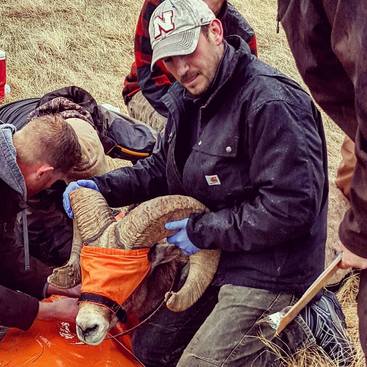
Ty conducted a large-scale project aimed at understanding factors affecting the spatial distribution of swift fox (Vulpes velox) along the eastern edge of their geographic distribution. His work was focused in the western half of Kansas. This region is characterized by short-grass prairie habitats interspersed with row-crop agriculture. Ty received his B.S. in Rangeland Management (option in Rangeland Wildlife Management) from Chadron State College and his M.S. in Wildlife Sciences from South Dakota State University. He is now a postdoctoral research fellow in the Department of Rangeland, Wildlife, and Fisheries Management at Texas A&M University. His dissertation research is published in Landscape Ecology, Biological Conservation, and Ecology. You can follow along with all of Ty's work here.
Catherine Berrick
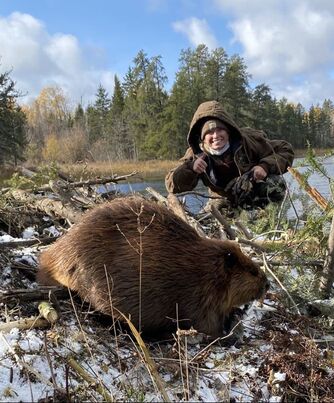
Cat assisted with all of our research efforts in Voyageurs National Park including live-trapping muskrats (Ondatra zibethicus), conducting sign surveys for semiaquatic mammals (muskrats, American mink [Neovison vison], and North American river otter [Lontra canadensis]), and measuring habitat changes in wetlands after muskrat translocations. She led our research into investigating the use of American beaver (Castor canadensis) lodges by muskrats. Cat has a B.S. degree in Fisheries & Wildlife from the School of Natural Resources at the University of Nebraska - Lincoln. She also holds a B.A. in Spanish from the University of Nebraska - Lincoln. Cat is now a full-time wildlife biologist at Voyageurs National Park.
Colleen Piper
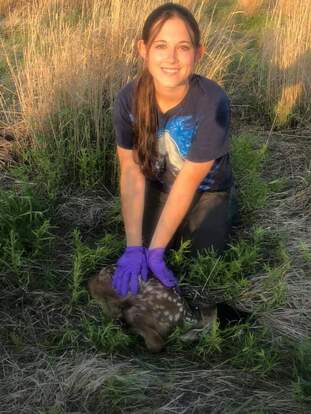
Colleen is interested in many aspects of carnivore ecology and wildlife management. For her thesis work, she used multiple years of occupancy data to uncover how landscape changes (e.g., agriculture, energy development) and availability of water affected the spatial distribution of American badgers (Taxidea taxus) in short-grass prairie ecosystems. Her study area covered the entire western third of Kansas, USA, and included almost 400 independent sampling sites. Colleen received her B.S. degree in Fisheries and Wildlife from The University of Georgia in 2018. While at UGA, Colleen was the treasurer (2015-2016) and president (2016-2018) of the student chapter of The Wildlife Society. Colleen is now perusing a Ph.D. at the University of Montana where she is investigating how beavers (Castor canadensis) influence biodiversity across landscape scales. While in our lab, Colleen was an author on work published in Landscape Ecology, Biological Conservation, and Ecology.
Ben Matykiewicz
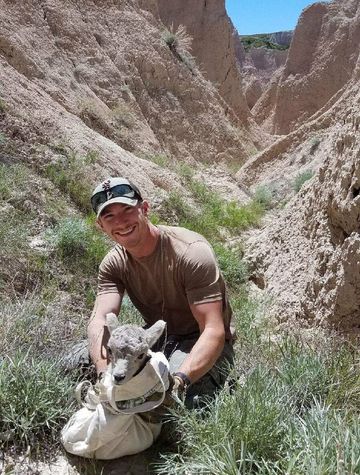
Ben is interested in how wetland biodiversity is impacted by various management techniques used to control the spread of invasive-hybrid cattails (T. x glauca). His work was focused in Voyageurs National Park, Minnesota. Current cattail management in this region includes the use of large floating barges with rotating chopping blades (i.e., Swamp Devil) to remove cattails. This technique is costly and relatively invasive. Enhancing muskrat (Ondatra zibethicus) population abundances may be a way to leverage a native biocontrol to set-back T. x glauca expansions. Ben specifically evaluated survival and post-translocation spatial ecology of muskrats (Ondatra zibethicus) to assess if translocation would be a viable management technique. He translocated muskrats into treatment sites to enhance muskrat densities and monitored the subsequent effects on cattail expansions and changes in native biodiversity. Ben received his B.S. in Wildlife Management (with minor in Wetlands Ecology) from Bemidji State University and an M.S. degree in Wildlife and Outdoor Enterprise Management from Kansas State University. His work from our lab is published in Wildlife Biology, Journal of Parasitology, and Journal of Zoo and Wildlife Medicine. Ben is now an Assistant Area Manager with the Minnesota Department of Natural Resources.
Max Larreur
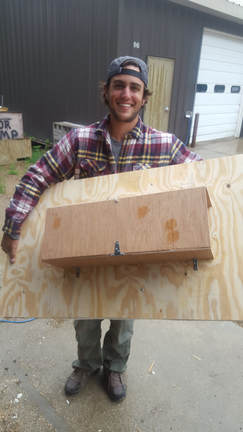
Max quantified the impacts of invasive-hybrid cattails (T. x glauca) on the spatial distribution of semiaquatic mammals (muskrats [Ondatra zibethicus], mink [Neovison vison], and otter [Lontra canadensis]) in lacustrine ecosystems in northern Minnesota, USA. His field work was focused in Voyageurs National Park where he worked closely with park biologists to collect data for his thesis. Max's research will be used to inform cattail management across the Midwest and could provide insight into how expanding T. x glauca populations affect native biodiversity in wetlands across North America. Max received his B.A. degree in Biology from Franklin College in Franklin, Indiana and his M.S. degree in Wildlife and Outdoor Enterprise Management from Kansas State University. His thesis work is published in Landscape Ecology and Wildlife Society Bulletin. Max is now a Ph.D. student at Southern Illinois University where he is focused on the spatial ecology of gray foxes in Illinois (Urocyon cinereoargenteus).
Kyle Wait
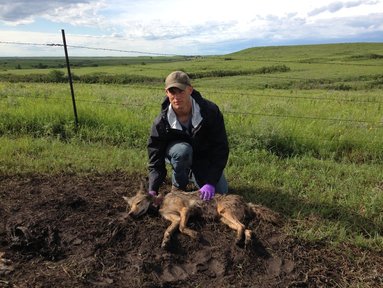
Kyle is interested in how land-use change structures carnivore communities. He used camera traps positioned along urban-rural gradients to investigate how urban land use affected the spatial distribution of carnivores in the last remaining tall-grass prairie in North America. He was also interested in how coyotes (Canis latrans), the apex predator in the region, influenced habitat occupancy dynamics of mesocarnivores along urban rural gradients. Kyle received his B.S. and M.S. degree in Wildlife and Outdoor Enterprise Management from Kansas State University. His thesis work is published in Journal of Wildlife Management and Journal of Mammalogy.
Zachary Porterfield
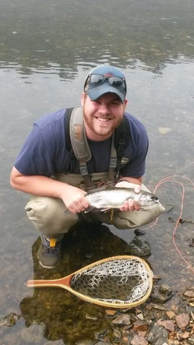
Zach was interested in how accurate waterfowl hunters are at identifying their harvested waterfowl species. Strict waterfowl harvest limits are imposed on some species based on observed abundance trends and harvest quotas. If the ability to identify these species is not accurate, some hunters may over harvest particular species. However, this potential bias in harvest reporting has not been rigorously evaluated. Zach's work will help waterfowl managers identify species-specific biases if they do exist.
Justin Patterson
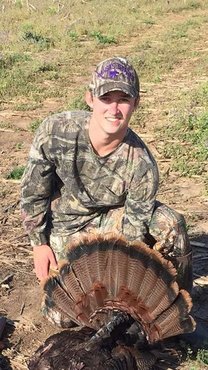
Justin's work supported our large-scale research project in Voyageurs National Park. He was interested in how encroaching T. x glauca populations, and their subsequent management, affect the diversity and abundance of native crayfish occurring in wetlands in northern Minnesota, USA. Justin evaluated pre- and post-management wetland sites and assessed how the abundance and diversity of crayfish responded to large-scale T. x glauca removal efforts.
Spencer Wesche
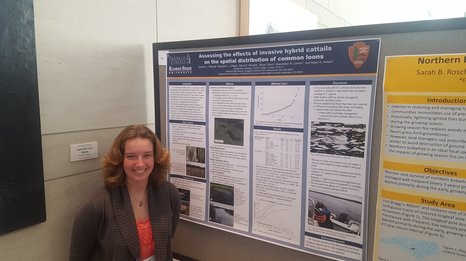
Unfortunately, Spencer has never attended Kansas State University. She was an undergraduate student from Franklin College in Indiana and worked on our invasive-hybrid cattail project in Voyageurs National Park as a technician for my graduate student, Max. While working on Max's project, Spencer completed her own research project investigating how common loon habitat selection is affected by expanding invasive-hybrid cattail (T. x glauca) populations. She presented her research at the TWS meeting in Raleigh, NC and she published this work in the Wildlife Society Bulletin. Spencer graduated from Franklin College with a B.A. in Biology and is now a conservation officer in Idaho.
Weiqiang Zhi
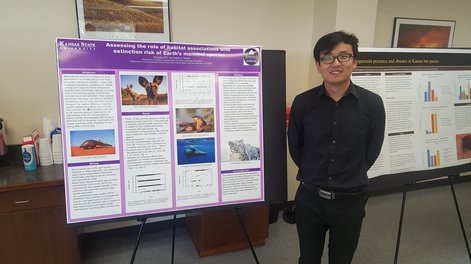
Weiqiang was interested in how preferred habitat associations of Earth's mammals factored into species-specific extinction risks. Specifically, he was investigating relative changes in extinction risks for semiaquatic mammals in relation to terrestrial and marine mammals (while controlling for mean body sizes). He used IUCN data to address these questions and presented his work at the Central Plains Society of Mammalogists annual meeting. Weiqiang recently graduated from Kansas State University with a B.S. in Statistics.
Michelle Lefave
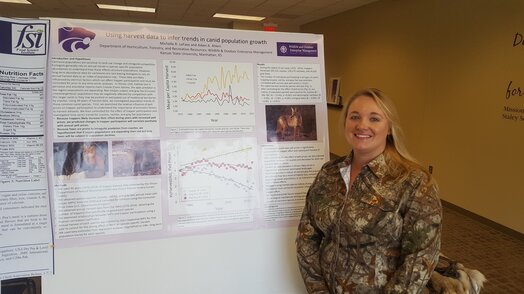
Michelle was investigating how canid (e.g., coyote, red fox, and gray fox) harvest data can be used to infer relative population changes. She was using ~30 years of data from Illinois, USA to determine if responses in red fox (Vulpes vulpes) and gray fox (Urocyon cinereoargenteus) harvest was related to increases in coyote (Canis latrans) populations during this time. Michelle has since graduated from Kansas State University with a B.S. in Wildlife and Outdoor Enterprise Management.
